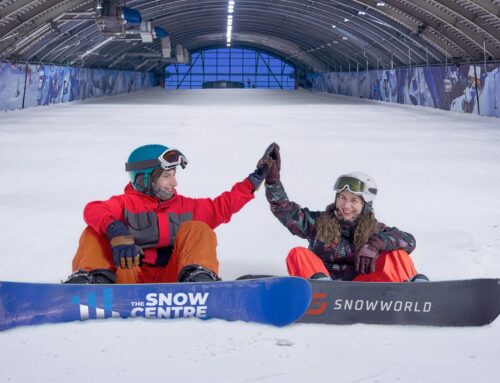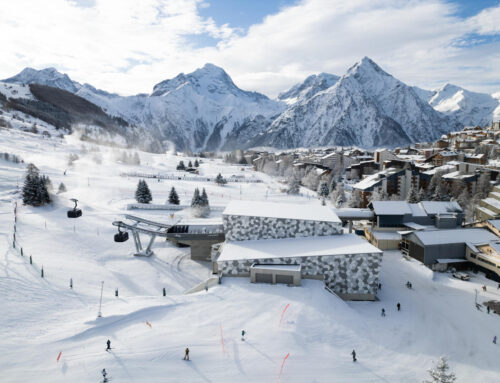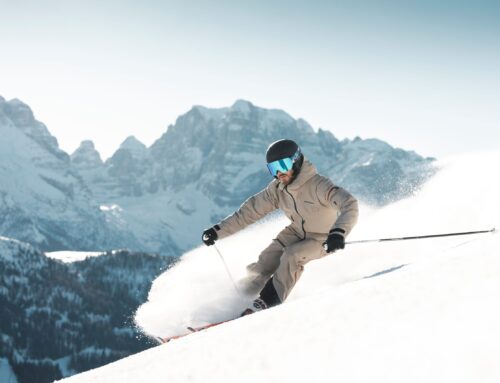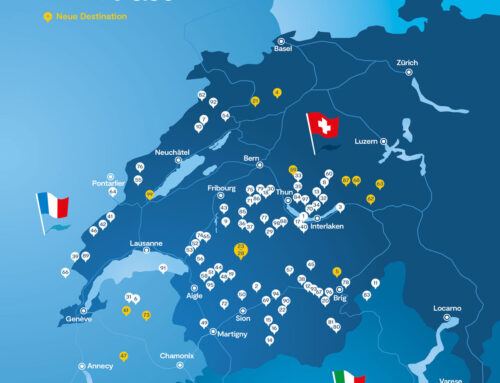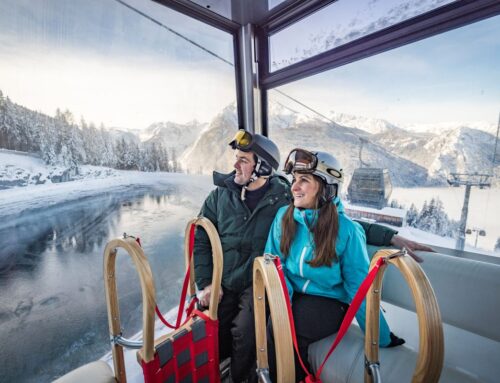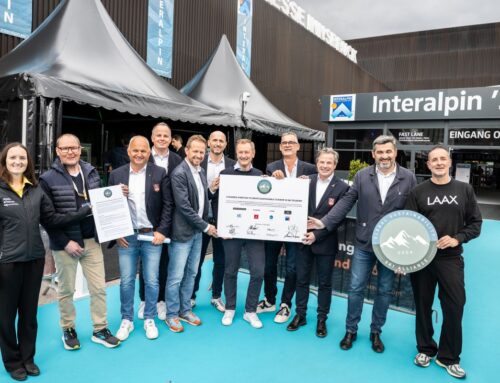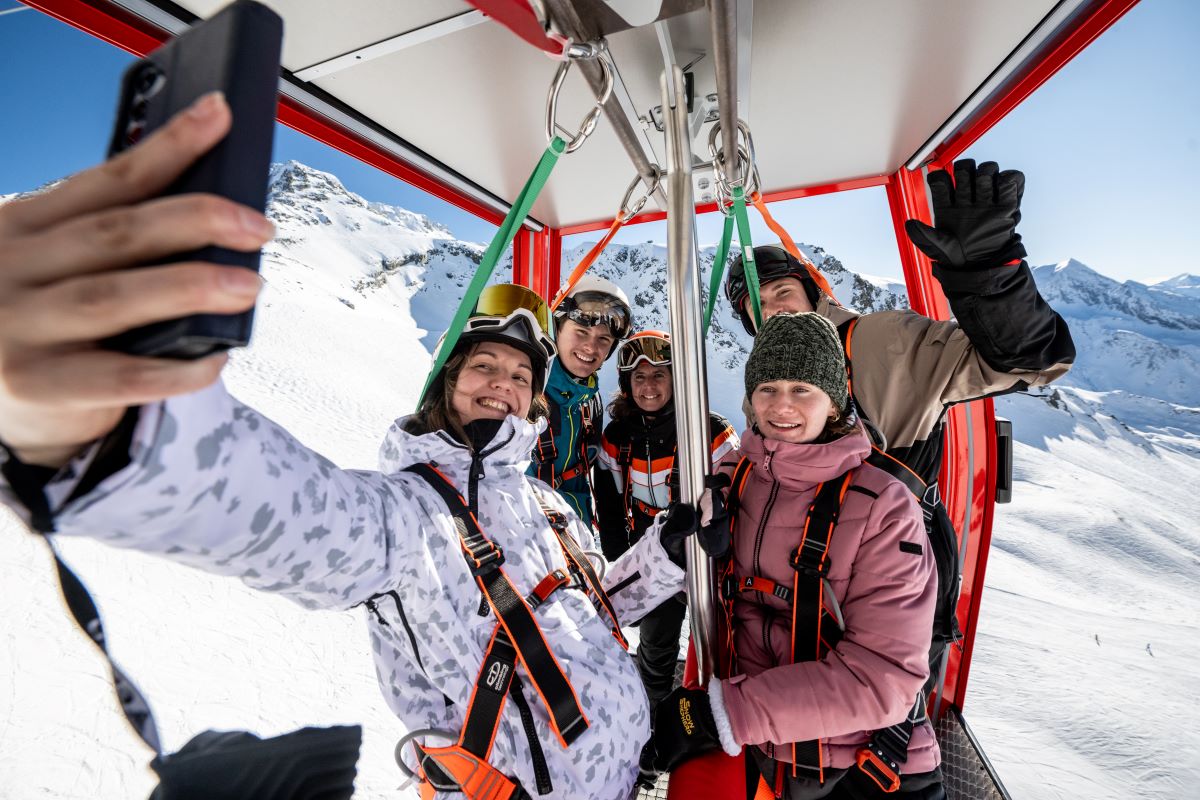
Management & Tourism
Staging: What ski resorts can learn from amuesement parks
SI World: Staging and attraction areboth concepts that play a role in the development of ski resort offerings. How do they relate to each other?
Lukas Melzer: Everything that attracts visitors is an attraction. This can be purely natural, such as a summit, a cave, or a special view, or man-made, ranging from playgrounds and events to extensive themed experiences.
Staging enhances the attraction. The attraction remains the central experience, while staging makes it more emotional, exciting, and unique – it literally “sets the stage“ for it.
Lukas Melzer

In what ways can ski resorts stage their offerings?
Staging starts with something as simple as a bench at a viewpoint or large photo frames directing guests’ gaze toward the mountain panorama. A growing trend from the USA and France involves lighting installations.
With spotlights, lights, or even laser and drone shows, even simple mountain forests can be turned into paid attractions – although environmental protection sets limits here.
Digital staging is also on the rise, such as virtual reality headsets or augmented reality applications being tested in the mountains. However, I remain skeptical about purely digital offerings. The natural experience remains the priority.
Lighting installations
like the Flumserberg Galaxy in Switzerland – are on the rise.
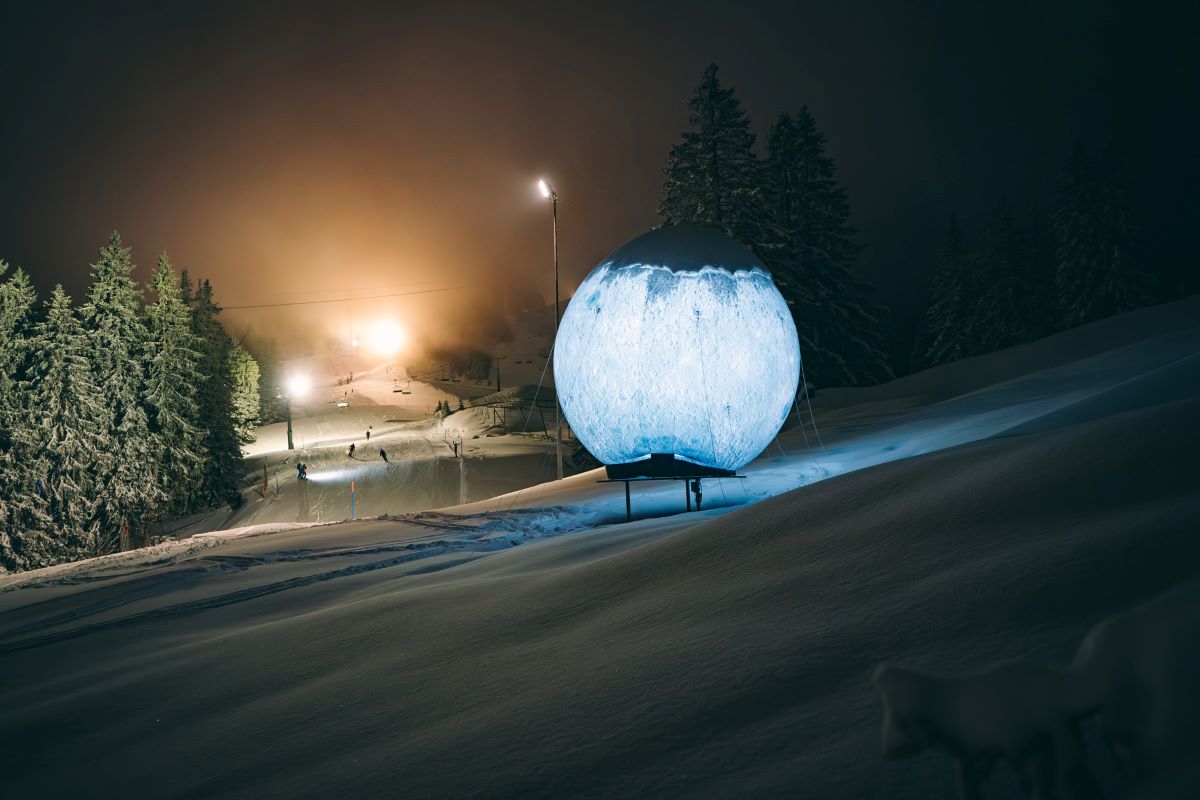
What guests want, likely depends on the target audience, right?
That’s partially true. If my destination is known for peace and nature, I won’t be hosting loud shows – that’s clear. However, there are universal elements in experience design. The experiential principles developed by Walt Disney nearly 100 years ago serve as a great guideline.
Key success factors include: the sensation of speed without personal effort, an abundance of food and drink, the dream of a paradise garden, sun and water, guests’ self-staging, as well as curiosity and entertainment. These elements tap into deeply ingrained evolutionary needs.
Which Disney elements are already widely implemented in the ski resort industry?
The sensation of speed without effort is a fundamental part of skiing. Interestingly, Disney conceptualized ski resorts decades before opening his first theme park. The cable car experience itself can also be enhanced – for example, with special cabins like open-air gondolas.
Quality mountain gastronomy has also become standard. And the dream of a paradise garden is naturally given in our industry – the mountains, the panorama, the flora, and fauna.
However, we must maintain this: messy ski racks in summer disrupt people’s aesthetic perception and diminish the mountain experience. Inconsistencies in staging should be avoided at all costs. This was a key principle for Disney, leading him to open his own “perfect“ world in 1955.
The eagle shows in the Zillertal (Austria)
correspond to Disney‘s show element.
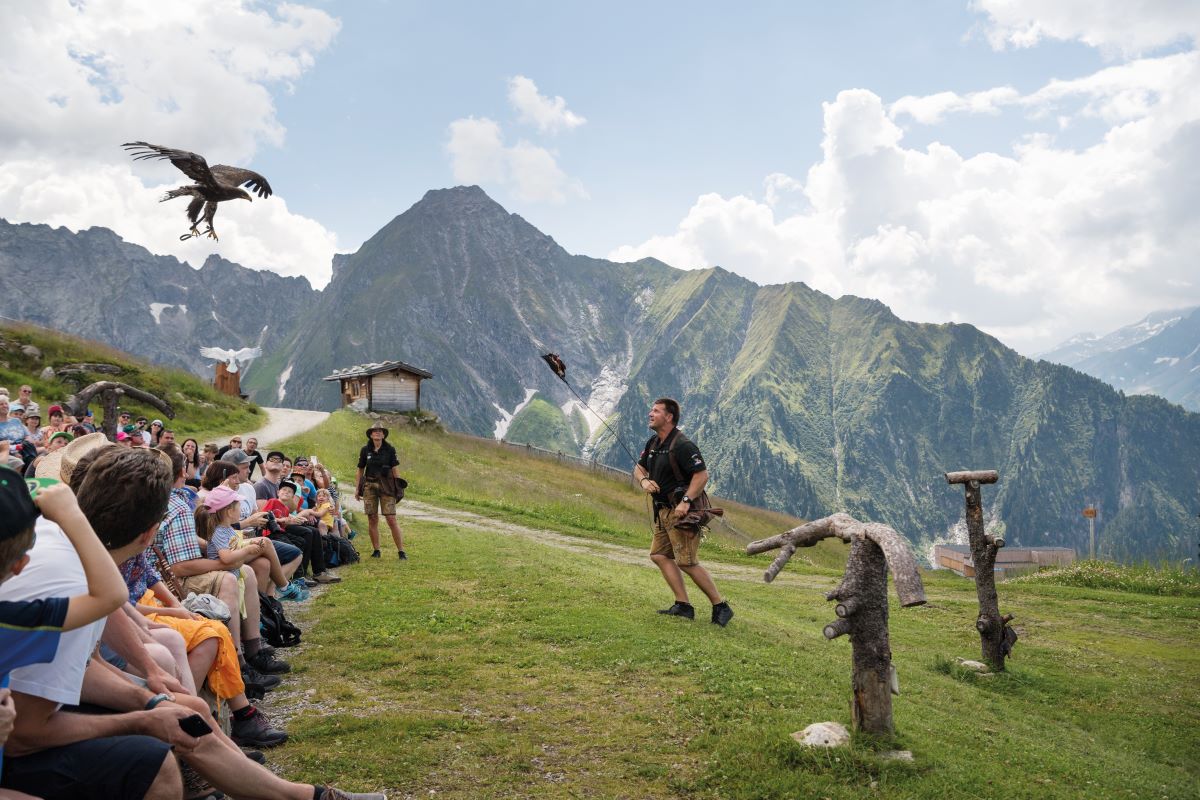
Where is there room for improvement in the remaining three elements?
The themes of sun and water have enormous potential. Think of expanded summer use of reservoirs, the installation of water attractions, or aligning gastronomy and high-traffic areas with the sun’s position.
Opportunities for guests to stage themselves could also be further developed. A great example is the Aérolive in La Plagne, France – an open cable car cabin where guests are secured with climbing harnesses and can take spectacular selfies.
But it doesn’t have to be that elaborate: Just as coaster rides include snapshot stations, zipline rides could feature action camera videos – creating additional revenue for operators.
Curiosity and entertainment also offer room for growth, although the industry already hosts great events and shows. A strong example is the eagle shows in the Zillertal, Austria.
Theme parks use shows strategically to manage queues for top attractions. That comes to mind when I see long lines at summer toboggan runs – there’s more that could be done beyond simply installing sunshades.
SIX DISNEY ELEMENTS
Speed without personal effort
Abundance of food and drink
The dream of a paradise garden
Sun and water
Self-staging of guests
Curiosity and entertainment
Everything in Disneyland is centralized in one place. To what extent does this apply to ski resorts?
In winter, this is naturally limited by skiing, but the sport itself carries the experience. In summer, additional attractions are much more in demand. The goal is for guests to stay longer and generate more revenue – ideally for a full day.
There are cases where summit restaurant revenues drop because guests hike away immediately after reaching the top. That’s why infrastructure clusters are emerging, combining stations, restaurants, playgrounds, and more.
Spatial planning should be considered even more strategically. At the same time, spreading visitors across a wider area can enhance their experience, reducing congestion on slopes or in restaurants. Here, theme parks set an example. They’ve used information screens displaying wait times for years to guide visitors.
The Alpspitzsplash in Nesselwang (Germany)
turns the reservoir into an attraction.
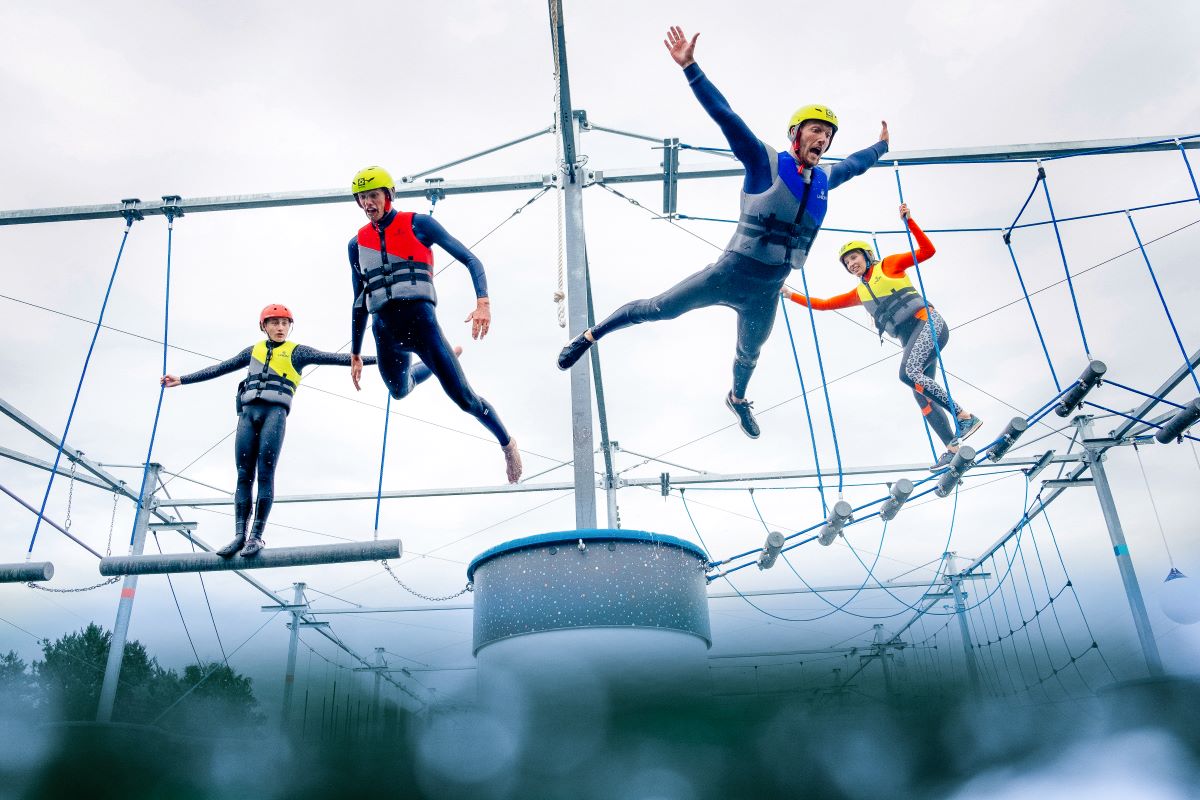
Theme parks are known for their numerous shops. Should ski rerorts follow suit?
That depends on the location. If I have many Asian or American visitors, it can work well. In other places, it’s more of a complementary offer. A clear regional or even local focus helps differentiate from mass-market products.
What are the key success factors for good attractions and their staging?
Either you focus on a unique selling point – which is often the right approach for smaller ski resorts – or you offer guests a package of experiences for a full day, which is more suitable for larger ski resorts. It’s crucial that attractions require no prior knowledge or skill – think “instant fun.“
In general, having a single financial entity managing all attractions is beneficial, following the resort model of theme parks. In terms of pricing, ski resorts, especially in Europe, often undervalue themselves – another lesson to take from theme parks. It’s also clear that guest expectations are rising, and the intervals for new investments are becoming shorter.
What role does storytelling play?
A good story is the cherry on top. A consistent theme is valuable – from mascots and station designs to an overarching narrative for the entire destination. But let’s be clear: no one comes just for a story. The offering has to be compelling!
Interview: Thomas Surrer
